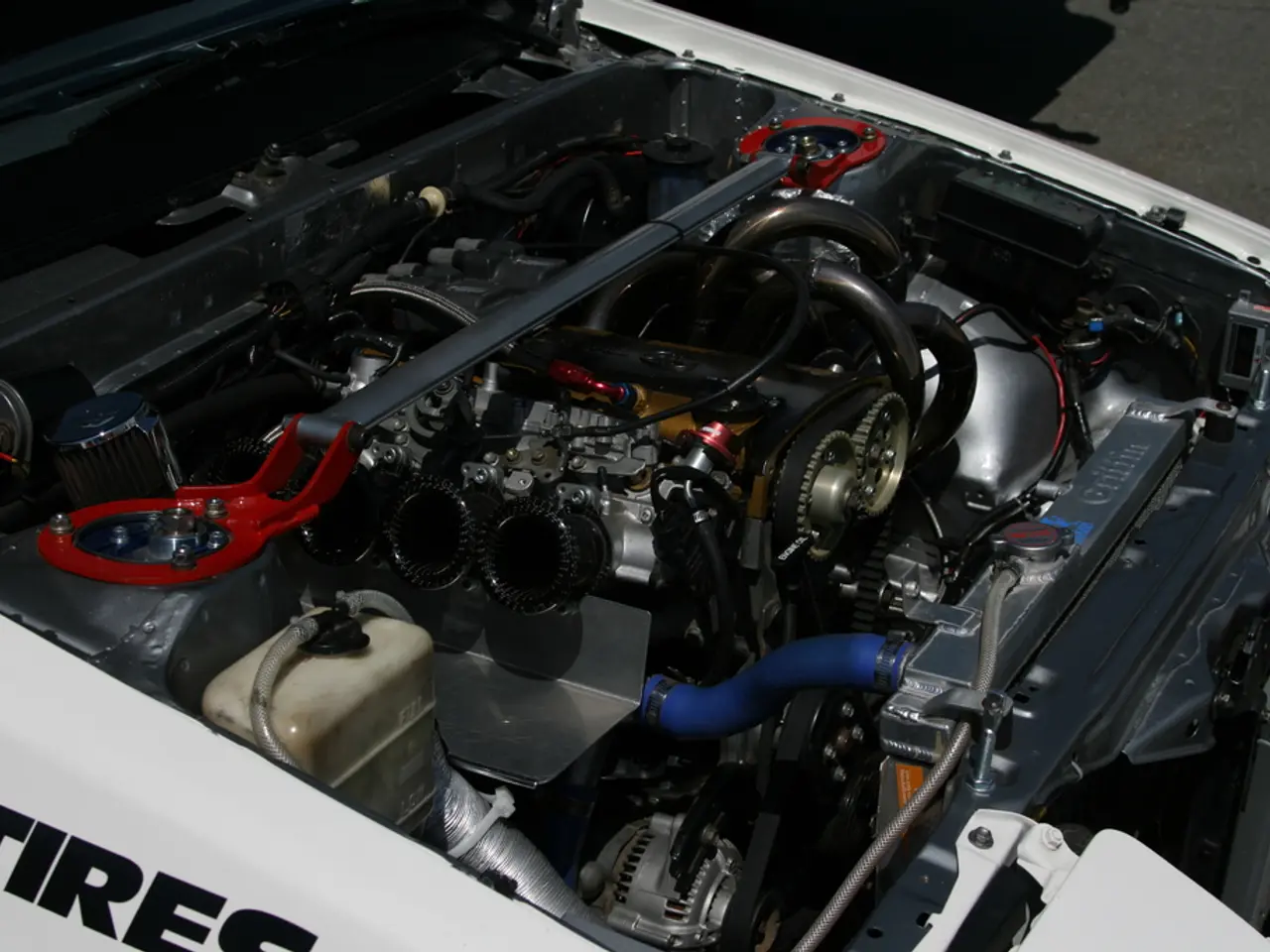Open-source Technology for Long-term Energy Storage: The Flow Battery
In the realm of homemade energy storage solutions, a new contender has emerged: the high energy density zinc-iodide flow battery. This innovative design, recently released by the Flow Battery Research Collective, offers a unique approach to power storage, combining electron current with fluid current.
Materials
The construction of a zinc-iodide flow battery requires several key components:
Electrodes
Carbon felt is a popular choice for electrode material due to its good conductivity and high surface area. A carbon felt piece sized around 3 × 3 × 0.47 cm³ has been used effectively in zinc-iodide flow batteries.
Electrolyte Solutions
The zinc-iodide flow battery relies on two main redox couples: the Zn²⁺/Zn redox couple and the I⁻/I₂ redox couple. Zinc compounds, such as zinc chloride (ZnCl₂), are dissolved in water to form the zinc electrolyte, while iodide salts are used for the iodide electrolyte.
Membrane or Membrane-free Arrangement
Some designs use membranes to separate electrolytes, but membrane-free flow batteries have also been reported to reduce complexity.
Construction Steps
- Prepare the electrodes: Cut carbon felt electrodes to the desired size and ensure good electrical connection.
- Assemble the flow cell: Use a commercial or custom flow battery cell frame; fit the electrodes on opposite sides.
- Flow channels setup: Connect tubing for electrolyte flow from separate reservoirs for the zinc and iodide electrolytes.
- Electrolyte preparation: Dissolve zinc chloride for the negative side and iodide salt for the positive side, maintaining a neutral or slightly acidic pH depending on the chemistry.
- Pump operation: Use peristaltic or similar pumps to circulate electrolytes through their respective compartments during charge and discharge.
- Sealing and testing: Seal all connections to avoid leaks and verify no cross-contamination between electrolyte streams.
Open Source Potentiostat
An open source potentiostat is essential for controlling and monitoring battery charge/discharge cycles. Popular open source designs include CheapStat or platforms based on Arduino and Raspberry Pi, which can be adapted for flow battery testing. These devices allow you to apply voltage/current profiles and record electrochemical data to analyze battery performance.
Summary
Here's a summary of the key components and their examples or details:
| Component | Example/Details | |-------------------------|------------------------------------------------| | Electrodes | Carbon felt (3 × 3 × 0.47 cm³) | | Zinc Electrolyte | Zinc chloride aqueous solution (Zn²⁺/Zn couple)| | Iodide Electrolyte | Iodide salt solution (I⁻/I₂ couple) | | Flow Battery Assembly | Commercial flow cell or custom setup | | Potentiostat | Open source Arduino-based potentiostat like CheapStat |
This approach balances proven materials and techniques with accessible hardware for monitoring. Adjust electrolyte concentration, flow rates, and electrode area to optimize energy density and battery stability.
Currently, detailed open-source designs specific to zinc-iodide flow batteries are still emerging, so adapting generic open-source potentiostat designs and flow battery cell frameworks is recommended. A forum is available for documenting progress or asking advice on building the battery.
In the realm of developing open-source technology for energy storage solutions, an Arduino-based potentiostat can be utilized to control and monitor charge/discharge cycles of a zinc-iodide flow battery. This innovative battery, relying on carbon felt electrodes and zinc chloride and iodide electrolytes, offers a unique approach to power storage within the field of science and technology.




